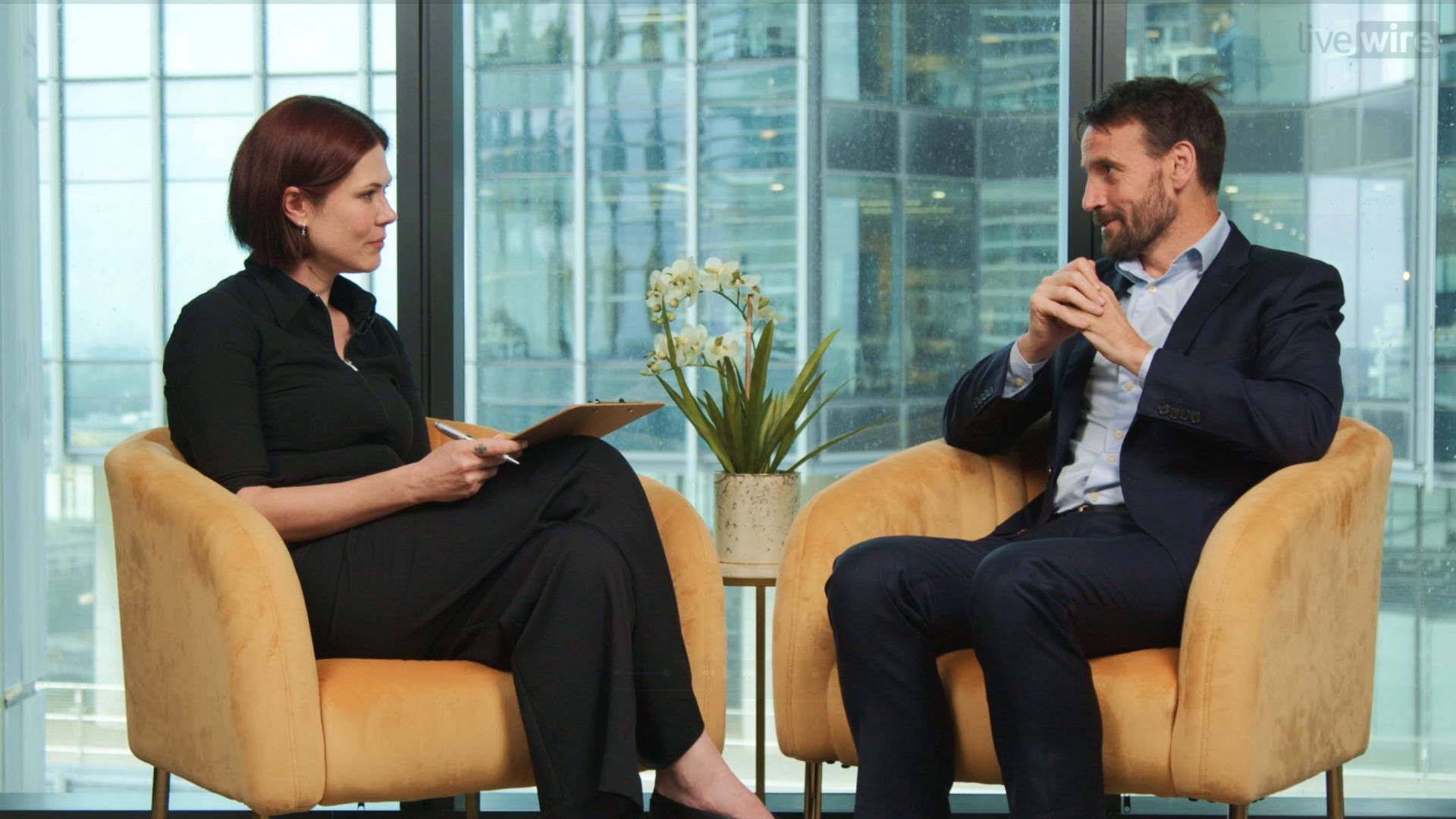Been dumped? Why index rejections can be a goldmine
One of my favourite hobbies is finding luxury items at a bargain. And not just a token discount that is still hideously expensive. I'm talking Comme des Garçons at Costco prices.
So when Steve Johnson of Forager Funds started talking about his approach to uncovering overlooked small-cap opportunities, it felt like bargain hunting cut from the same cloth, so to speak.
Small caps may have had a rough trot in recent years, but Johnson argues it’s not just about performance driving the narrative – it’s about perception and structure.
For the full story of what lies beneath the surface, watch the video below.
Please note, this interview was filmed Tuesday 15 July, 2025.
What you see is not what you get
“The small-cap index in Australia is not a great index,” Johnson says.
“It's got a lot of revenueless biotechs and mining exploration companies, and just not owning those has made a pretty big difference to returns.”
The rise of passive investing has also drawn money away from the active small-cap space. “Big super funds have been taking money away from actively managed small caps… they're just so big that the small end of the market is fairly useless.”
But Johnson says that beneath the surface, active small-cap managers have actually done well.
“The median small-cap manager has done 4% per annum better than the index over the past 10 years [according to Morningstar]. That's not only better than that small cap index, it's actually better than the All Ords Index as well... So it's definitely not all been bad news."
Passive selling, active opportunity
While passive investing has reshaped markets, Johnson sees it as a double-edged sword that active managers can exploit.
“There’s a lot of thoughtless selling going on in our parts of the market that's creating opportunities to buy stocks at really, really attractive prices,” he explains.
The key is finding companies on the unlucky side of indiscriminate selling and then backing them to bounce back.
“If you can find the right business that ultimately goes back into some of those indexes… the valuation applied to it at the other end of the spectrum can be quite extreme. So if you can bridge that gap, there are enormous amounts of money to be made.”
This phenomenon has become a repeatable edge for nimble managers.
“Those little crumbs that come off can make an enormous difference to your portfolio,” Johnson says.
“Catapult is an example we’ve talked about a lot, but it added more than 10% to our portfolio in a 12-month period just from one stock.”
One person's trash? Another's treasure
One of Forager’s strongest advantages comes from spotting opportunities in price-agnostic selling, especially when a company gets booted from an index.
Johnson talks about Johns Lyng Group (ASX: JLG) as an example of a business they had been tracking for a while: “The share price started to fall in March of this year. It actually came out of the ASX 200. It would’ve come out of the ASX 300 as well.”
It was only a matter of time, given how far things had fallen.
“So on top of disappointed, larger active managers, you then get the passive selling, and the share price was $9, all the way down to $2,” Johnson says. “And we’d been watching that stock pretty closely from $5. In the momentum sell-off, there was the opportunity for us to get involved.”
A similar setup played out with another holding, Comfort Systems USA (NYSE: FIX), a building and service provider for mechanical, electrical and plumbing building systems.
“It had been a hot sector, the money flooded out, and the share price of that company halved; it went from $500 to $300 in the space of a couple of months. And no one's estimates of the company's earnings changed,” Johnson explains.
“It was literally the same business, same earnings, share price had halved. And we'd been waiting on that one for quite some time. So it was a great chance for us just to get out there and buy it.
And the optimism has come back and the share price is back at $500 again.”
The forced selling is not the only reason Forager would get involved: “Always, when we buy a stock, we sit there and ask, why is someone selling this? What is the reason for it being cheap?”
But Johnson says it’s a good indicator. "Increasingly, getting booted from an index is a contributor to the downward momentum that a company is already suffering.”

Catapulted to a 5x return
Catapult (ASX: CAT) is a perfect example of how small-cap investing blends insight, patience, and conviction.
“Every single sporting team that's outside the stadium doing their training sessions has got Catapult stuff set up around the outside,” Johnson says. “The proliferation has been very, very obvious.”
Despite the visible traction, the company struggled with profitability. “It had been growing, the revenue was going up, it was burning cash. There wasn’t a lot of evidence this was going to change.”
But a new management team and a clear plan shifted the narrative. “They said, this business is going to grow and each dollar of growth is going to translate to this much extra profit for shareholders.”
Over time, the results backed up the story. “We got one result, two results, three results, four results. And we really upsized that investment as the evidence started coming in.”
The result was a fivefold return and inclusion in the ASX 300.
Keep the portfolio fresh and the future looks bright
Forager’s portfolio looks very different today than it did 12 months ago.
“Some of the things that have worked really well for us are now fairly fully priced,” Johnson says. “Catapult was a 10% weighting six months ago. It's now less than five [percent] in our Australian fund. And the new opportunities have grown there.”
There’s been a significant reset across both their local and global portfolios. In particular, the team has been shifting away from US exposure and leaning into underappreciated markets, like Japan.
“We're really excited about some of these Japanese software stocks… the valuations are fractions of what they are here in Australia and in the US."
Looking ahead, Johnson is confident that the future for active small-cap investors is bright, especially as passive dominance continues.
“This trend towards passive keeps going, but there will always be people that want to allocate money to people that are making money for them…our job’s easier than it was because of these passive flows.”

2 topics
3 stocks mentioned
2 contributors mentioned
.jpg)
.jpg)